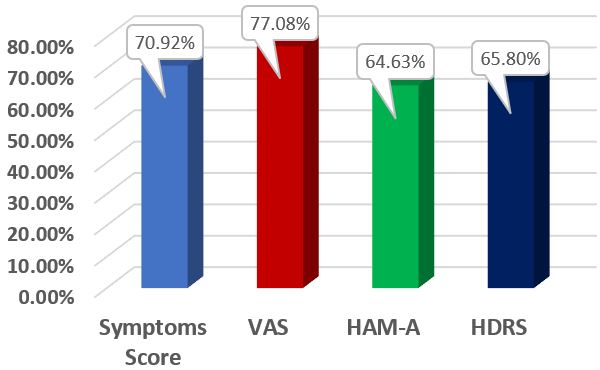Clinical Assessment of Rasnadi Taila Nasya in the Management of Vatika Shiroroga: An Ayurvedic Approach to Tension-Type Headache
DOI:
https://doi.org/10.21760/jaims.10.5.2Keywords:
Nasya, Rasnadi Taila, Tension-type headache, Vatika ShirorogaAbstract
Tension-type headache (TTH) or Vatika Shiroroga exerts a considerable socioeconomic burden through reduced productivity, compromised work efficacy, and diminished quality of life, despite its non-fatal nature. The allopathic management strategies for TTH adversely affect patients including habituation, medication overuse headache; cognitive impairment, gastrointestinal disorders, and metabolic disturbances. To overcome these limitations alternative therapeutic approaches such as Ayurveda can be used. The objective of the present study is to develop a safe, cost-effective, and comprehensive therapeutic protocol using Rasnadi Taila Nasya for patients suffering from Vatika Shiroroga. Thirty patients were selected for the clinical study. Treatment efficacy analysis revealed complete remission in 30% of patients, marked improvement in 50%, moderate improvement in 13.33%, and mild improvement in 6.67%. Rasnadi Taila Nasya serves as an effective natural remedy for tension-type headaches, offering relief through its soothing, anti-inflammatory, and muscle-relaxant properties.
Downloads
References
Stovner LJ, Hagen K, Linde M, Steiner TJ. The global prevalence of headache: an update, with analysis of the influences of methodological factors on prevalence estimates. J Headache Pain. 2022;23:34.
Rosen NL. Psychological issues in the evaluation and treatment of tension-type headache. Curr Pain Headache Rep. 2021;16:545-53.
Tripathi B, editor. Charaka Samhita with Charaka Chandrika. Vol. 1. Varanasi: Chaukhamba Surbharati Prakashana; 2007.
Shastri A, editor. Sushruta Samhita. Varanasi: Chaukhamba Sanskrit Sansthan; 2009.
Tripathi B, editor. Ashtanga Hridayam. Delhi: Chaukhamba Sanskrit PratishthanPrakashana; 2009.
Tripathi B, editor. Madhavnidanam of Madhavkara with Madhukosha commentary by Vijayrakshita and Shrikantha Datta. Edited with Vimala-Madhudhara Hindi commentary by Brahmanand Tripathi. Varanasi: ChaukhambaSurbhartiPrakashana; 2007.
Kasture HS. Ayurvediya Panchkarma Vigyana. 12th ed. Allahabad: Baidhyanath Ayurveda Bhavan; 2009.
Kotwal S, Gupta A. A critical review on the pharmacodynamics of Nasya Karma. J Ayurveda Integr Med Sci. 2020;5(1):237-43.
Sharma PV, editor. Dravya Guna Vijnana. Varanasi: Chaukhambha Bharati Academy; 2005.
Tripathi B, editor. Sarangadhara Samhita. Varanasi: ChaukhambaSurbhartiPrakashana; 2011.
Dabas A, Kundal P, Bavalatti N, Rajagopala M. A clinical success in VatajaShirashoola with Rasnadi Taila Nasya and Dashamoola Kwatha - A Case Report. J Ayurveda Holist Med. 2021;9(4):12-9.















